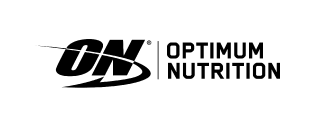
- Health advice
- Mar 26, 2016
Your mother always told you to eat your vegetables, and for good reason. But who knew those green vegetables that look like little trees actually held the key to your immunity? Well, new studies have shown that broccoli not only fights cancer, but also builds up your immune defenses in the most vital area of your body—your gut. Of course, one single vegetable cannot take all the credit. Indeed, all cruciferous vegetables contain a vital compound that prevents cancer and boosts liver function.
 So you may be wondering if all cruciferous vegetables contain sulforaphane, why is broccoli emphasised? That is because broccoli, specifically broccoli sprouts, contains the highest and most potent levels of sulforaphane. As a matter of fact, broccoli sprouts are coming to be recognised as a superfood. As a bonus, you can ingest the same quantity of sulforaphane by consuming just 28 grams of broccoli sprouts as oppose to 680 grams of the mature plant. Nevertheless, there are some steps you must follow to get the most health benefit from your broccoli.
So you may be wondering if all cruciferous vegetables contain sulforaphane, why is broccoli emphasised? That is because broccoli, specifically broccoli sprouts, contains the highest and most potent levels of sulforaphane. As a matter of fact, broccoli sprouts are coming to be recognised as a superfood. As a bonus, you can ingest the same quantity of sulforaphane by consuming just 28 grams of broccoli sprouts as oppose to 680 grams of the mature plant. Nevertheless, there are some steps you must follow to get the most health benefit from your broccoli.
What is a cruciferous vegetable?
“Cruciferous” is a scientific name used to describe plants that belong to the cabbage family. Examples of cruciferous vegetables include cabbage, cauliflower, broccoli, brussel sprouts, and kale. It turns out that cruciferous vegetables contain the compound, sulforaphane, which suppresses the growth of breast cancer cells.The Gut of your Immunity
Sometime ago, researchers discovered that our first line of immune defense lies in our intestines thanks to gut flora. Still, further research has shown that there are other soldiers in our gut protecting us from infection and disease. These soldiers are white blood cells called lymphocytes and they lie between the cells that make up the lining of the intestines. However, these lymphocytes are only activated when their special receptors are turned on by sulforaphane.Sulforaphane and you
Even though you may have never heard of sulforaphane, you should know that this invaluable compound is responsible for activating over 200 genes. These genes specialize in producing antioxidant enzymes like glutathione. This master antioxidant rids the body of free radicals and reduces inflammation mainly by recycling other antioxidants. Additionally, sulforaphane attacks cancer cells head on by triggering several other enzymes throughout the body. Therefore, cruciferous vegetables are very effective in fighting or preventing cancer of the breast, bladder, colon, liver, lung, ovaries, and prostate.Broccoli—the best of the bunch
 So you may be wondering if all cruciferous vegetables contain sulforaphane, why is broccoli emphasised? That is because broccoli, specifically broccoli sprouts, contains the highest and most potent levels of sulforaphane. As a matter of fact, broccoli sprouts are coming to be recognised as a superfood. As a bonus, you can ingest the same quantity of sulforaphane by consuming just 28 grams of broccoli sprouts as oppose to 680 grams of the mature plant. Nevertheless, there are some steps you must follow to get the most health benefit from your broccoli.
So you may be wondering if all cruciferous vegetables contain sulforaphane, why is broccoli emphasised? That is because broccoli, specifically broccoli sprouts, contains the highest and most potent levels of sulforaphane. As a matter of fact, broccoli sprouts are coming to be recognised as a superfood. As a bonus, you can ingest the same quantity of sulforaphane by consuming just 28 grams of broccoli sprouts as oppose to 680 grams of the mature plant. Nevertheless, there are some steps you must follow to get the most health benefit from your broccoli.
- Eat broccoli sprouts instead of the mature vegetable
- If possible, eat broccoli sprouts that are no more than three days old
- Avoid overcooking broccoli by steaming it for only two to four minutes
- Consider consuming raw broccoli in salads or wraps



















